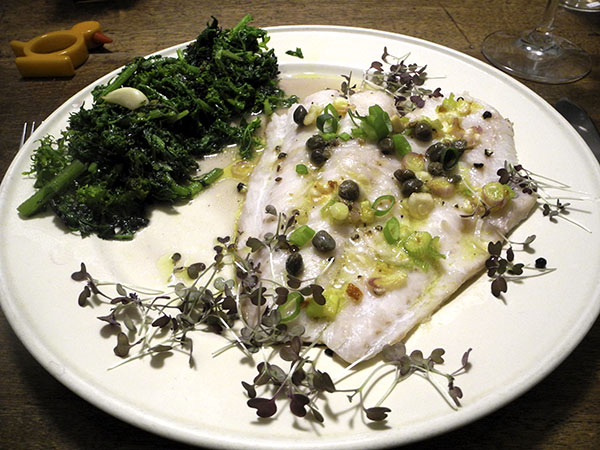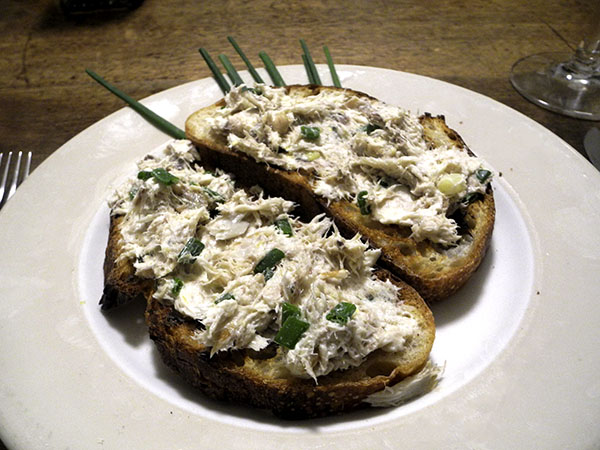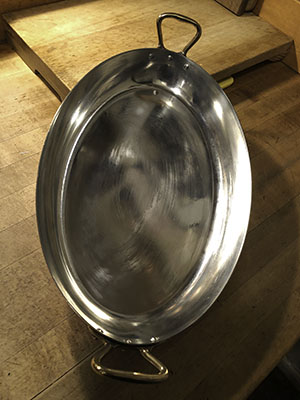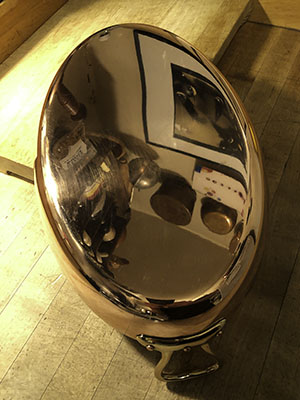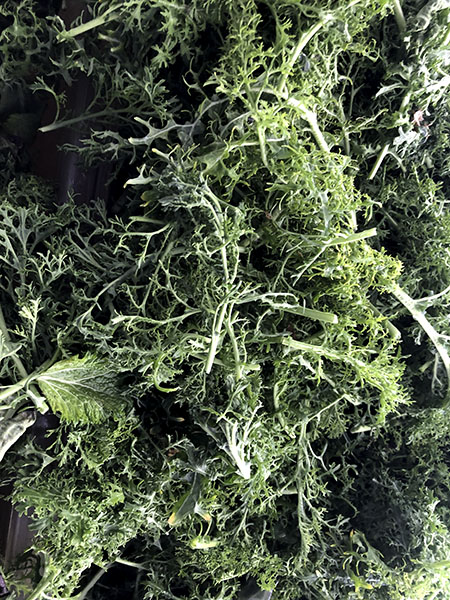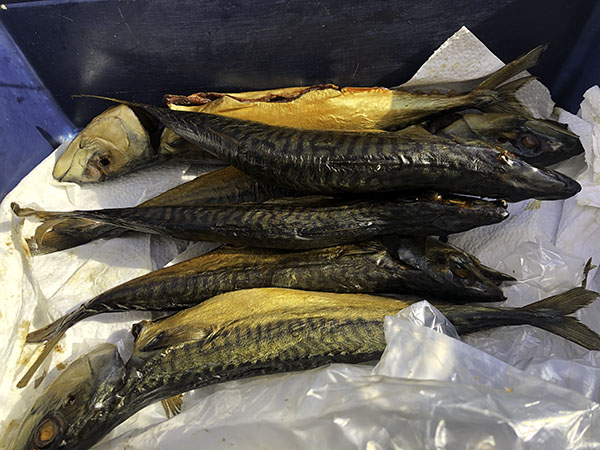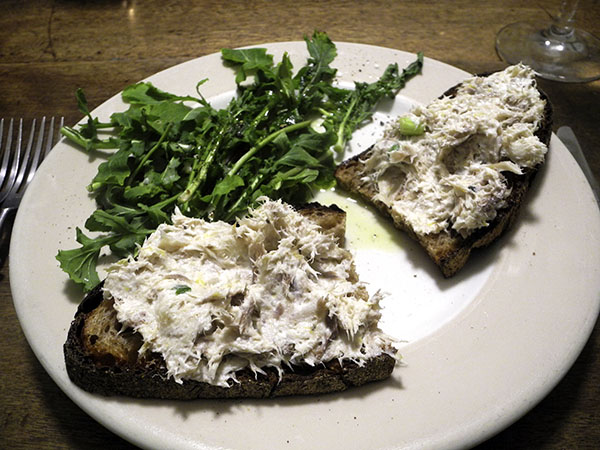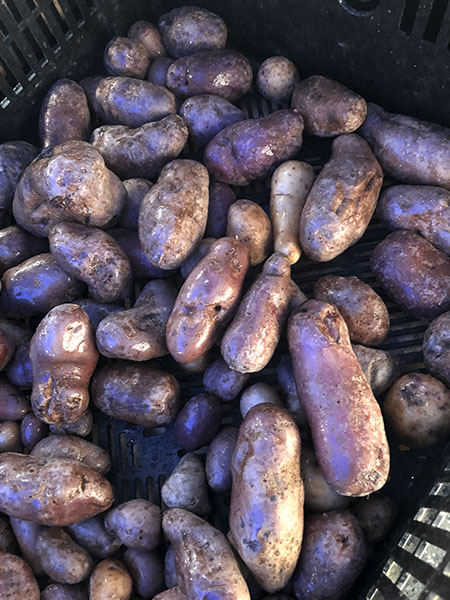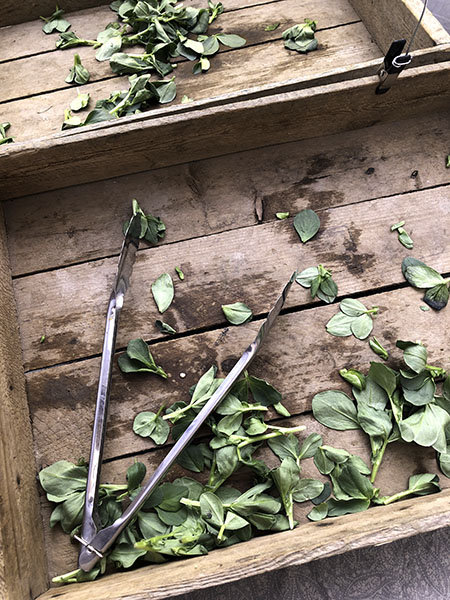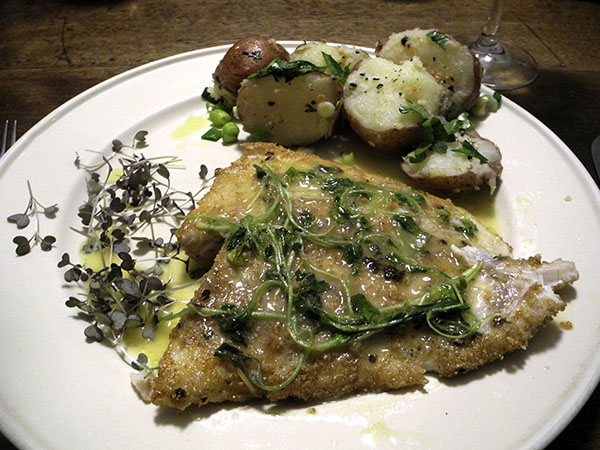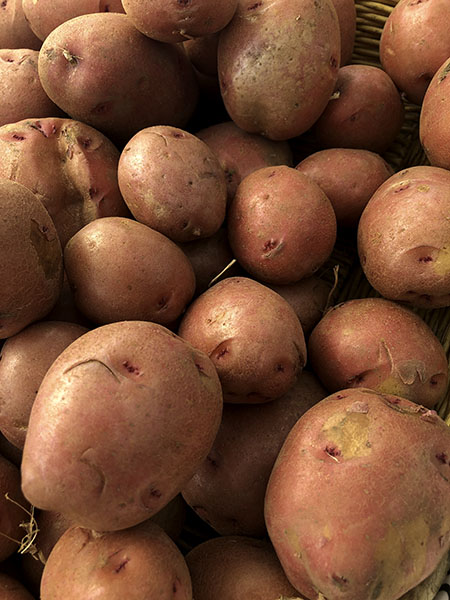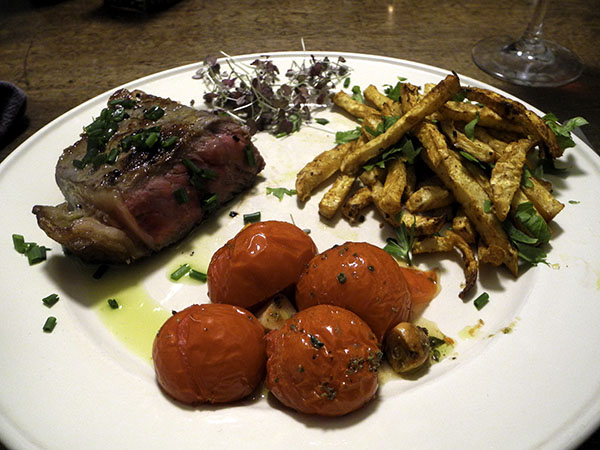
Steak and French fries, and catsup.
Actually, a grass-fed local steak, celery root frites, and roasted tomatoes.
The background story is that I had gone to our local While Foods at some time after 8 in the evening yesterday intending to pick a wild Northwest Coast wild salmon fillet, as I do occasionally (and in season, they aren’t even previously frozen). For the first time ever, I think, they had none. No problem, I could go back home and cook up an interesting pasta. But then I looked at the butcher display on my way out. This was something I hadn’t done in a very long time, since I almost always buy both meat and seafood from our local farmers and fishers in the Union Square Greenmarket, and occasionally from Ottomanelli & Sons on Bleecker.
On one of the trays inside the display case there was a single thick, beautifully-cut strip steak remaining, with a citation of its local origin on the display case window above it, including a picture of the family owners. It may not be a tiny local family farm, but it seemed to have some decent credentials, and then I saw that it was also on sale. I texted Barry to see if he felt like having beef that night, but I had really already decided our names were on it.
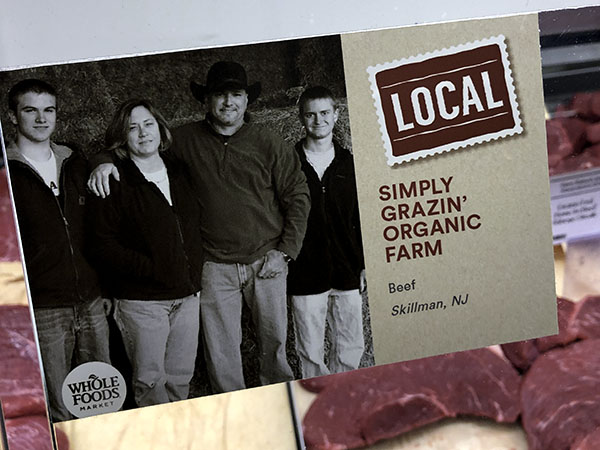
I’m now apologizing to my usual farmer-venders, to the Greenmarket, and to the Ottomanelli brothers for my momentary truancy. And I cannot tell a lie: The steak was pretty awesome.
- one 13-ounce grass-fed organic New Jersey (Simply Grazin’) top loin boneless strip steak, rinsed, dried on both sides with paper towels and sprinkled with sea salt, allowed to rest on the kitchen counter on a paper plate, covered loosely with wax paper, for almost an hour, then dried once again and placed inside an enameled cast iron oval pan that had already been heated above a medium-hot flame, cooked for 3 or 4 minutes on each side, or until the meat was just under medium-rare, halved crosswise and removed to 2 plates sitting on the top of the warm ancient oven, a bit of organic Chelsea Whole Foods Market lemon squeezed on top, a good amount of scissored fresh chive from Whole Foods scattered on top, and some good Trader Joe’s Italian Reserve extra virgin olive oil drizzled on the herb, allowed to sit a few minutes before serving garnished with micro red mustard from Two Guys from Woodbridge
- eight Maine cherry ‘cocktail’ tomatoes from Whole Foods, slow-roasted inside a small antique rolled-edge tin oven pan with a heaping teaspoon of dried Italian oregano from Buon Italia, half a tablespoon or more of Trader Joe’s Reserve olive oil, and 2 or 3 halved cloves of ‘music garlic’ from Windfall Farms
- one 15-ounce celery root (or celeriac) from Norwich Meadows Farm, scrubbed, peeled, and cut into the size and shape of potato frites, each about 1/4″ in cross section, tossed inside a bowl with olive oil, a half teaspoon of Safinter Pimenton de la Vera smoked picante paprika, sea salt, and a little freshly-ground black pepper, spread onto a large seasoned Pampered Chef unglazed ceramic pan, and roasted at 425º until brown and cooked through, or for about 30 to 35 minutes, removed to the plates, and sprinkled with chopped lovage from Two Guys from Qoodbridge [Note: they were pretty spicy, so some tastes may want to use less paprika, or a version that’s less hot]
- the wine was a Spanish (Rioja) red, Bodegas Hermanos de Pecina, Rioja Cosecha Tinto, 2017, from Flatiron Wines

We’ve been huge fans of his for years, but we met Thomas Adès for the first time at the Springbreak Art Show on Sunday (I’m afraid we might have come on like groupies), so we thought it would be appropriate to revisit one of his most amazing orchestral pieces while we enjoyed our next home-cooked dinner, on Tuesday.
[image of Thomas Adès from Classic FM]




